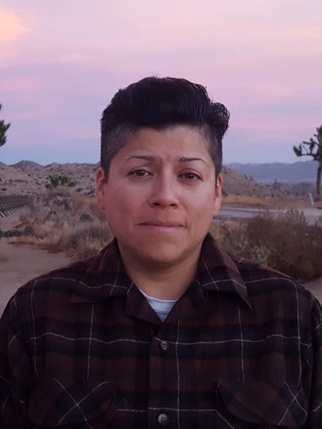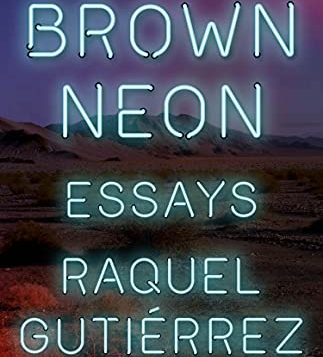RAQUEL GUTIÉRREZ’ debut essay collection, Brown Neon, explores queer identity and the art that evolves from it. The book is a travelogue of the author’s journeys across the southwestern U.S. in perpetual search of love, art, and community. It’s also a critique of the ways in which Latinidad (in particular, queer Latinidad) is represented in the art world, which can feel baffling and insular. The book examines what it means to be butch in a world that would just as soon leave the queer community behind. Its triadic structure further emphasizes its multiple interconnected subjects, breaking the collection up into three sections headed “Llorando Por Tu Amor,” “Difficult Terrains,” and “La Mano Obra.”
The first section begins with an intimate portrait of the author’s relationship with the late Jeanne Córdova, the author for whom Lambda Literary’s eponymous Jeanne Córdova Prize for Lesbian/Queer Nonfiction is named. An essay titled “On Making Butch Family” reflects not only on the death of Córdova, whom the author affectionately refers to as “Big Poppa,” but also on the continued importance of a distinct butch identity within the queer community. An essay titled “A Butch in the Desert” sees the author and loved ones contend with the loss of Córdova, performing rituals of grief and remembrance upon her passing. A third essay opens with a scene at an adobe shrine outside a café and becomes a meditation on the arduous process of making adobe bricks as a proxy for the similarly arduous process of working through a difficult, passionate relationship.

In the next section, Gutiérrez looks toward the border, where art cannot be separated from the politics of identity, immigration, and human rights. In “Do Migrants Dream of Blue Barrels?” the author rides along on a humanitarian effort to refill water stations in the Texas desert for the migrants crossing the border on foot. “Behind the Barrier: Resisting the Border Wall Prototypes as Land Art” further examines the troubling visuals of the border and the even more problematic attempts to turn those visuals into hollow performance art. From there, the author goes back to the gallery space, examining the complex politics of representation and the damage of grifting and misrepresentation. Together, these three essays provide a political and ethical context for understanding the author’s own position in the art world and the complexities of the art world itself.
In the final section, Gutiérrez focuses her critical acuity on the works of individual artists. They include the late Laura Aguilar, a photographer who chronicled life as a fat lesbian in California; Shizu Saldamando, a portrait artist who captured the likenesses of an underground and often queer community; and Sebastian Hernández, a performance artist who brought together Latinx and indigenous traditions and forced audiences to reckon with the connections between those traditions. Amid these three focused essays is the pointedly titled “Do I Love San Anto?” which approaches a much broader subject (San Antonio, with its strange mix of intensely patriotic kitsch and extremely cool, queer spaces) with the same attention to detail.
Taken as a whole, Brown Neon shines a light on identities, experiences, and artworks not often explored in the realm of creative nonfiction. In this way, the collection feels wholly original even though it’s firmly rooted in the social and historical context that the author is seeking to explore. The result is an impressive group of essays that display a mixture of aching vulnerability, hard-earned expertise, and exquisite prose. ____________________________________________________
Ruth Joffre is the author of the short story collection Night Beast.







